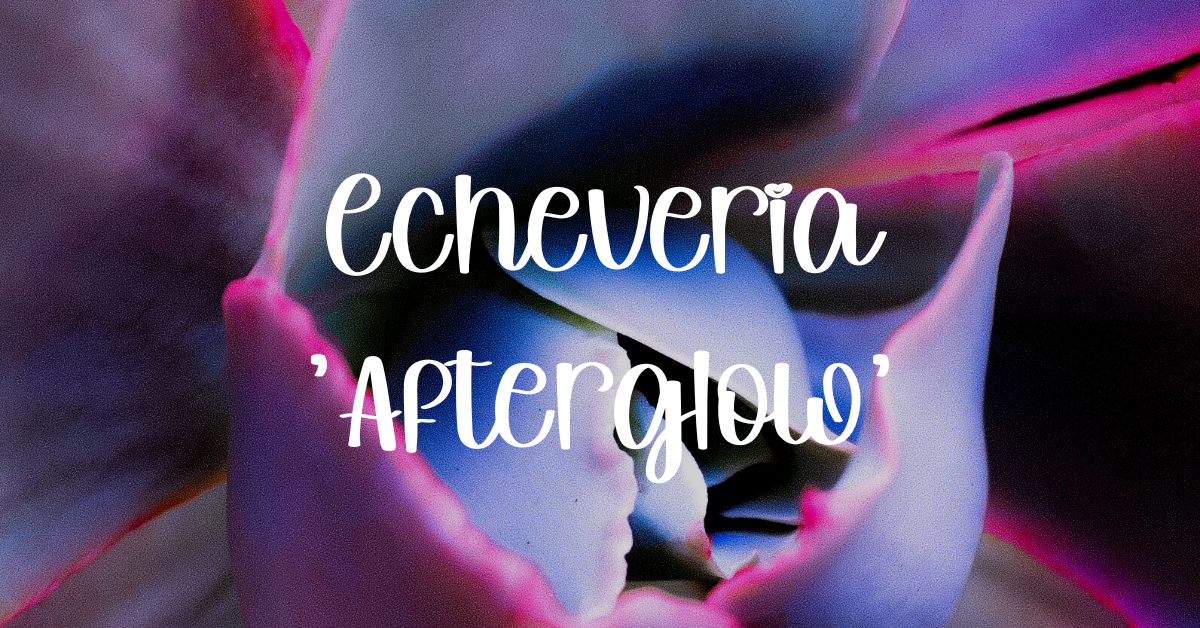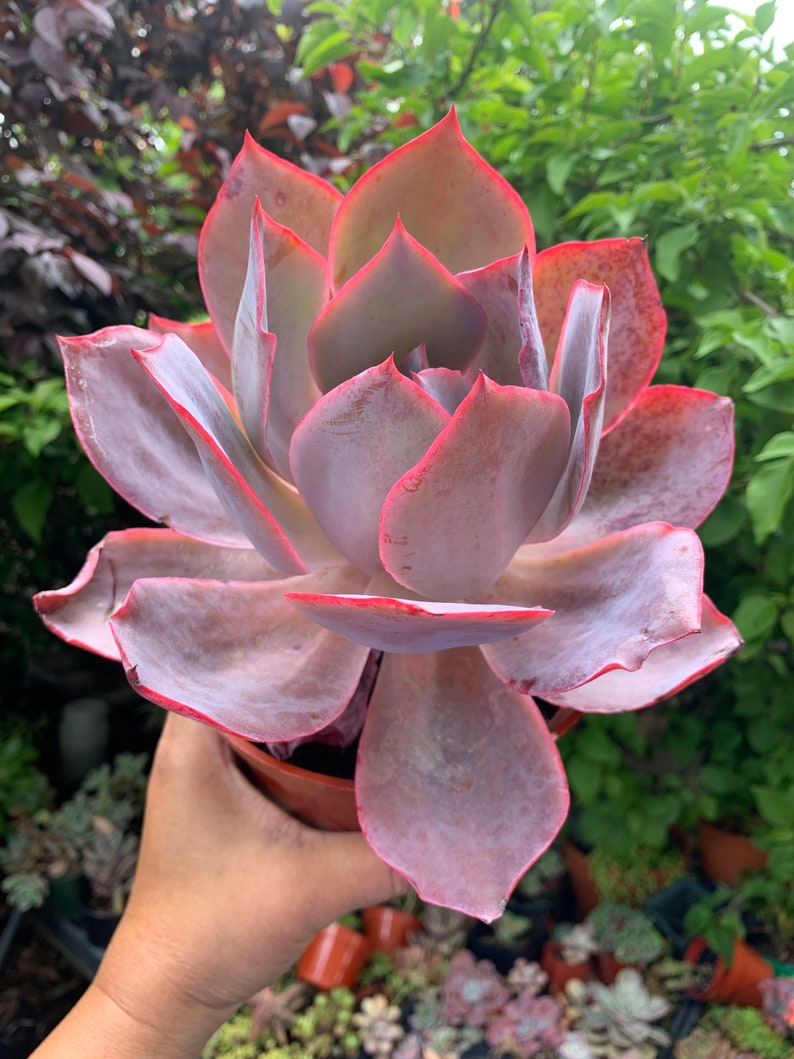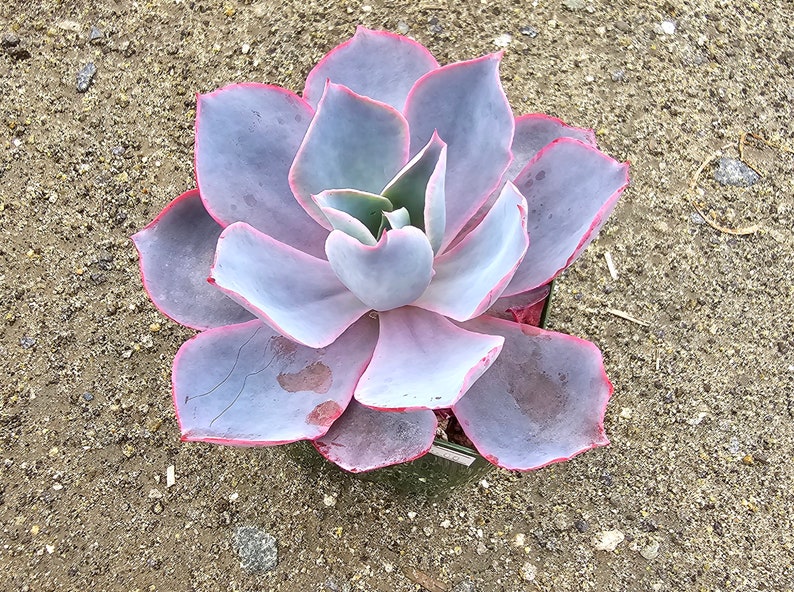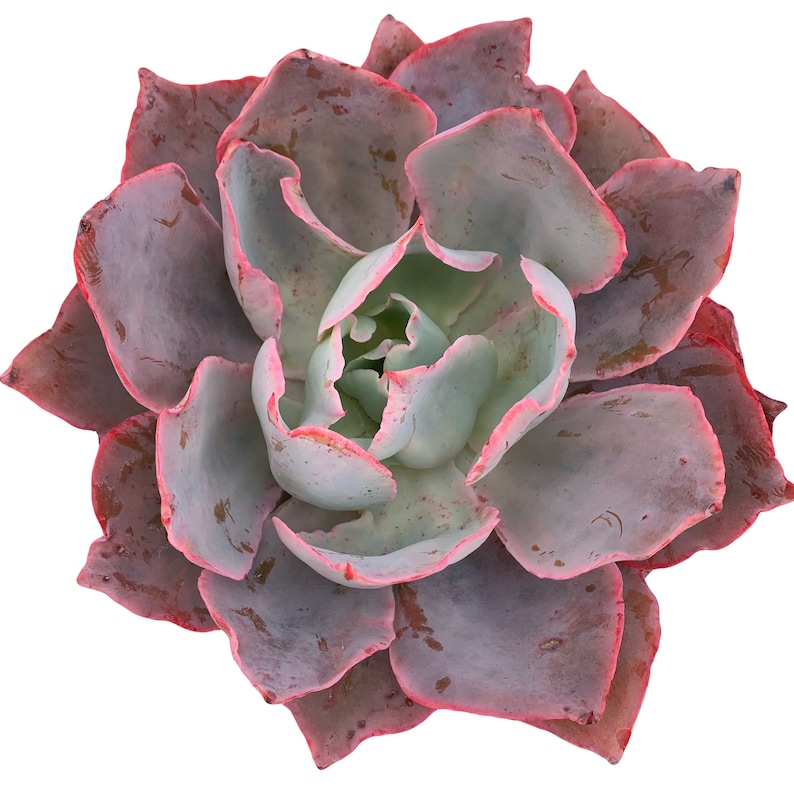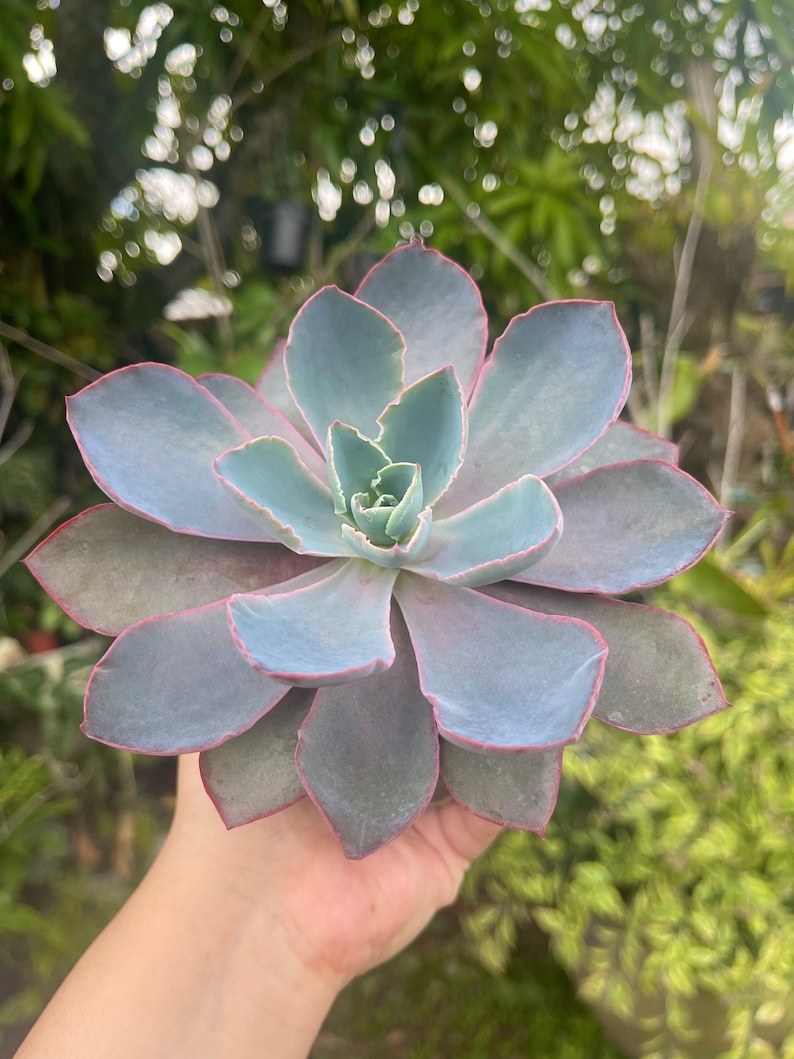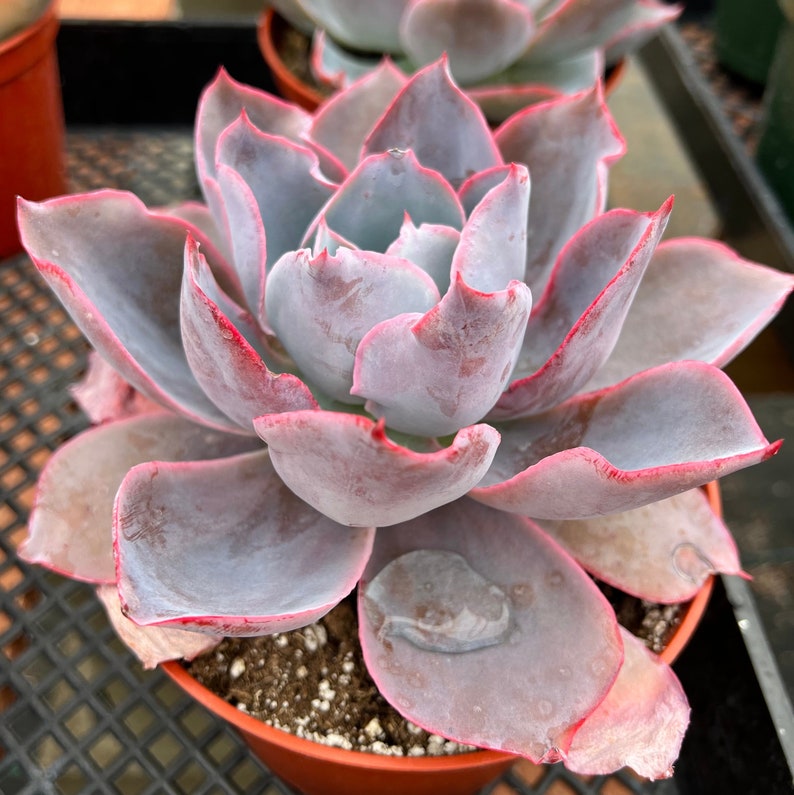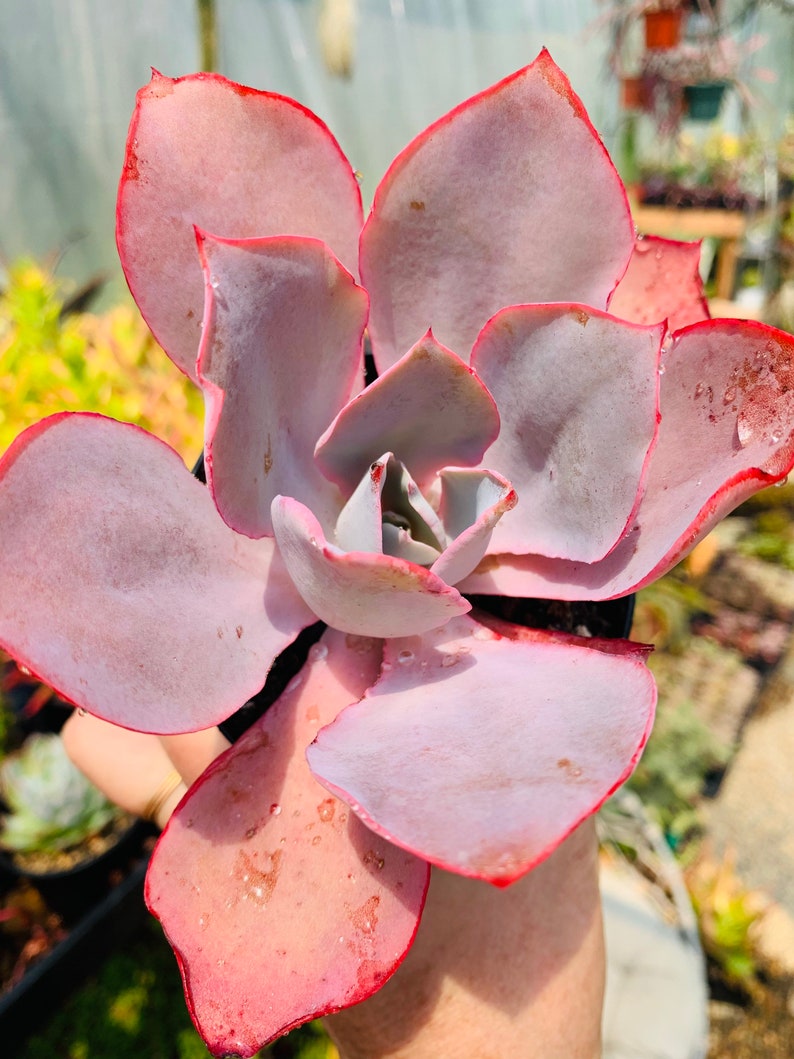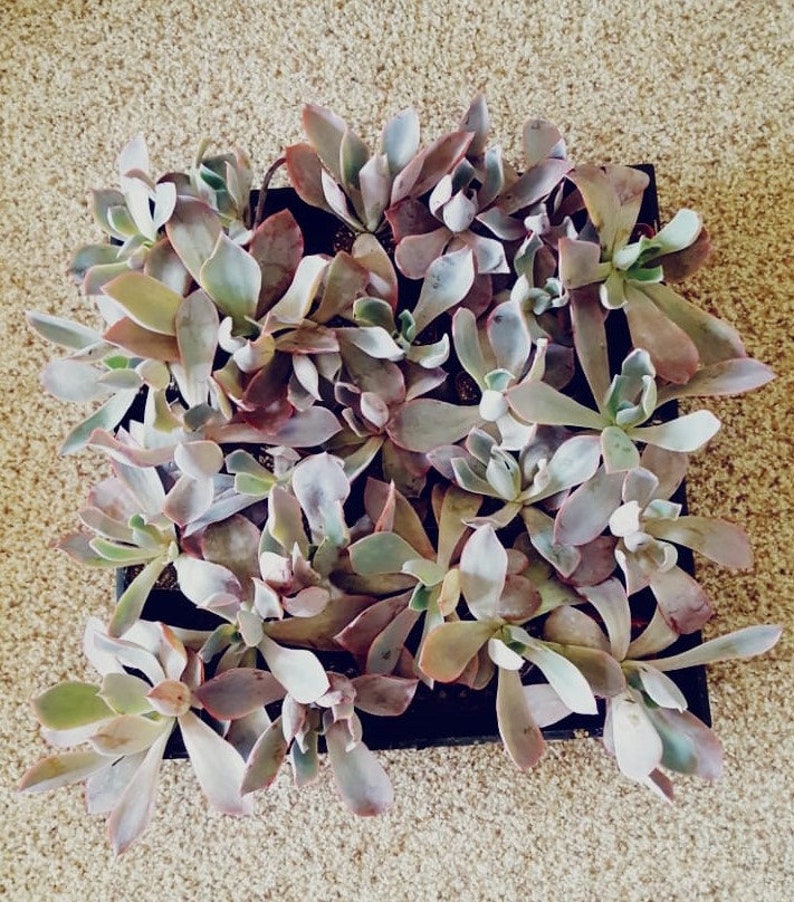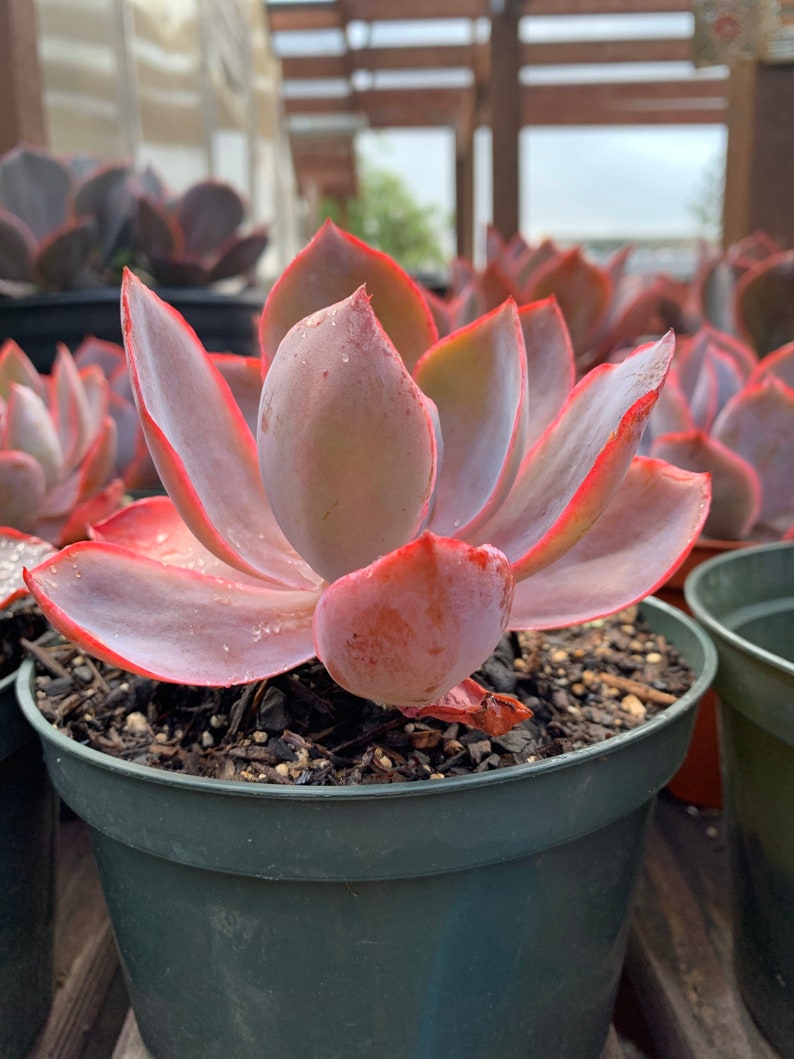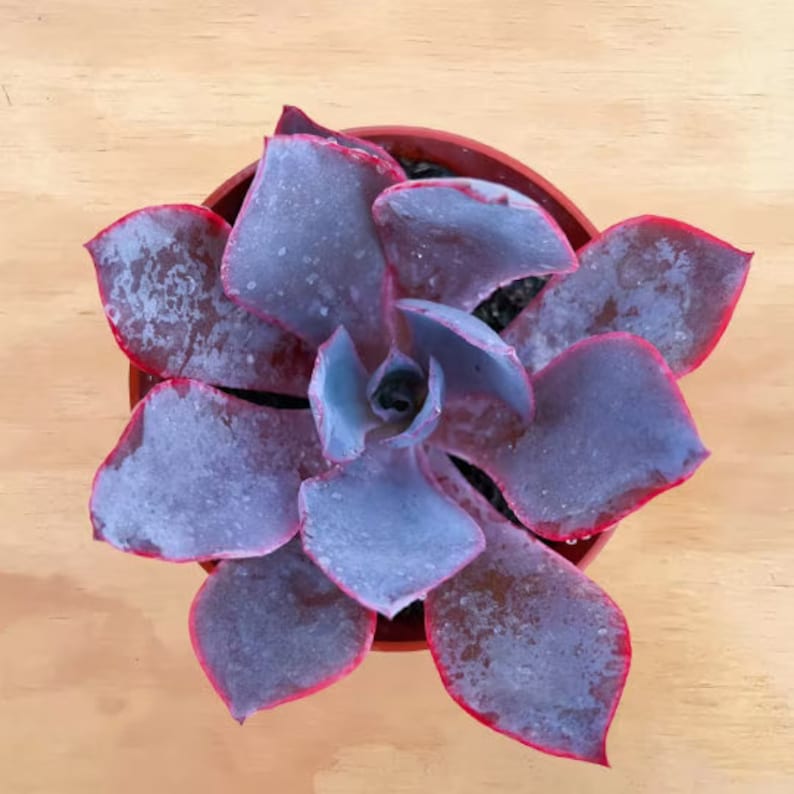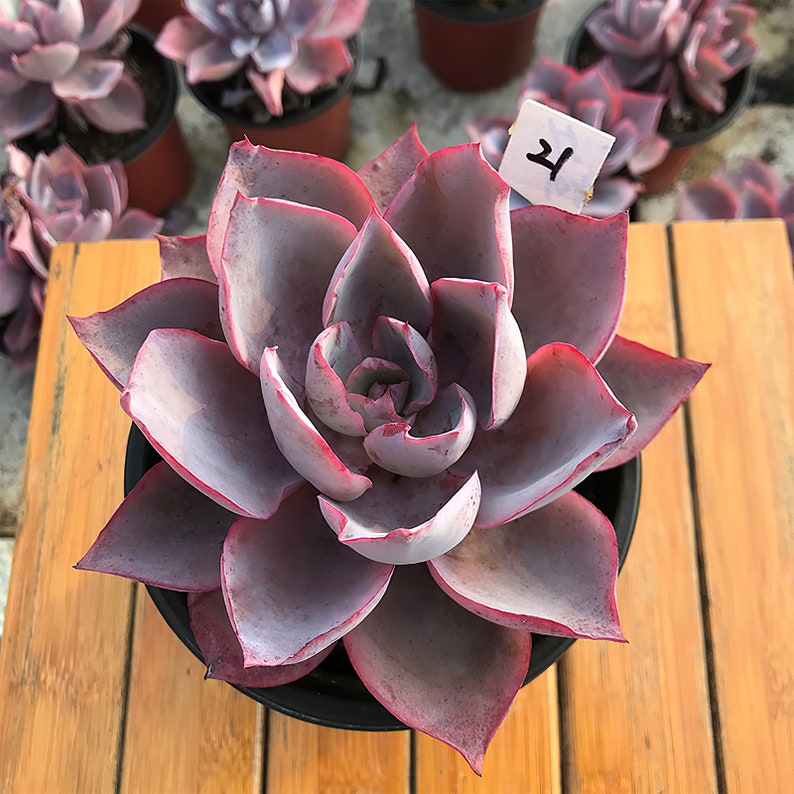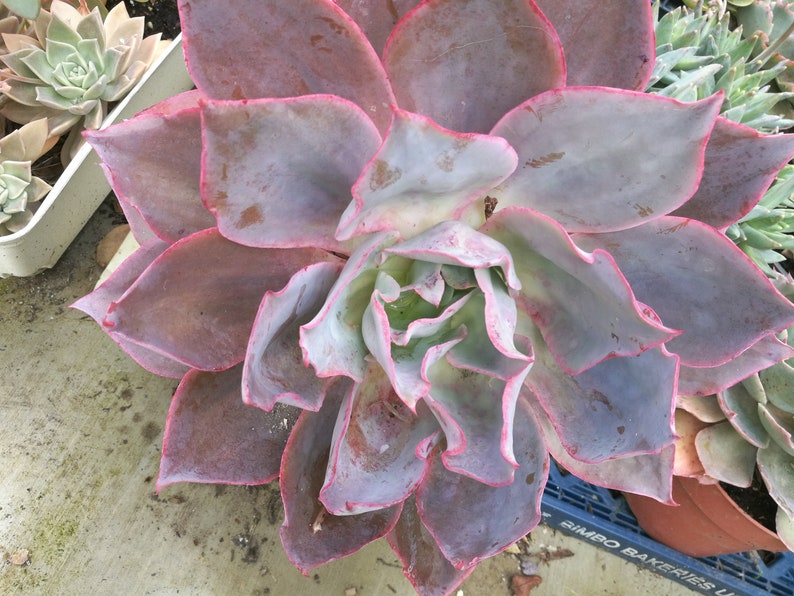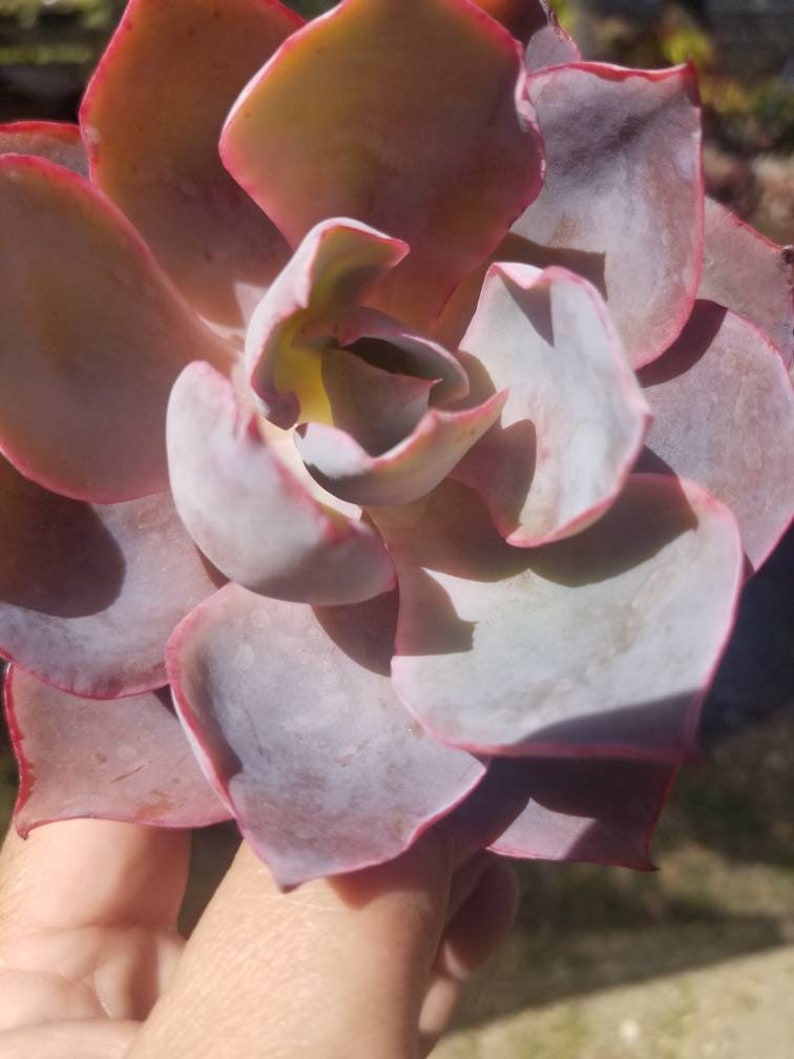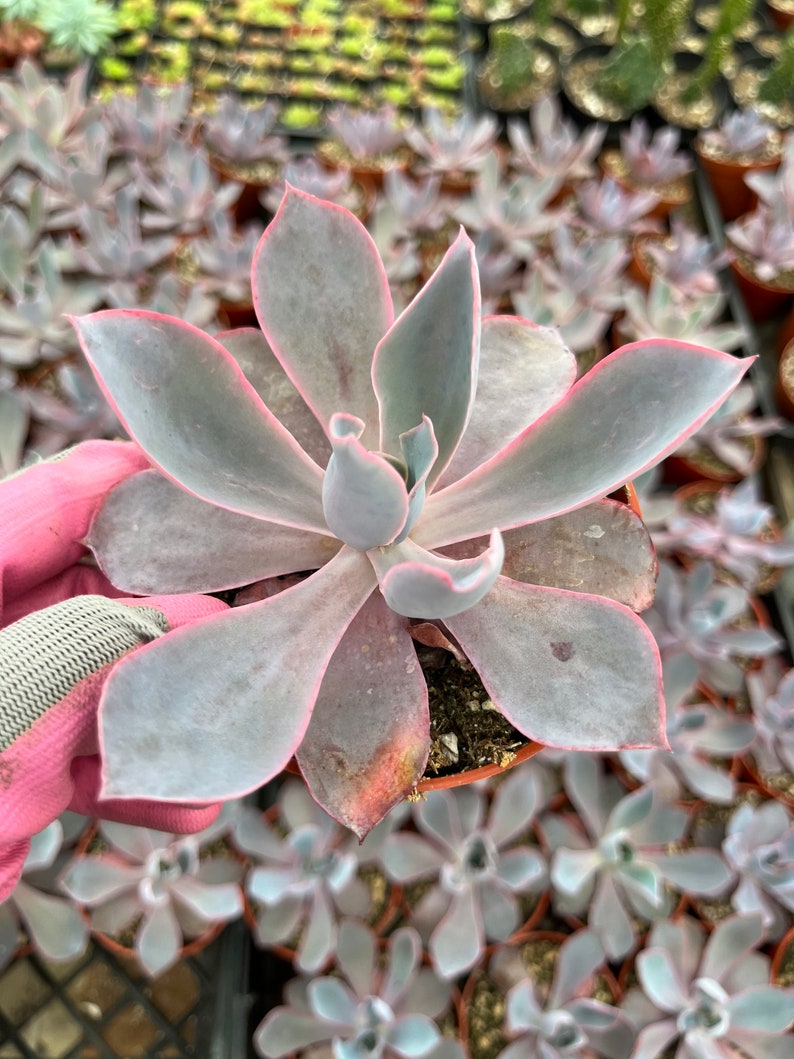Echeveria ‘Afterglow’ is a stunning succulent that captivates with its unique characteristics and vibrant colors. In this comprehensive care guide, we will explore everything you need to know to cultivate and maintain a healthy Echeveria ‘Afterglow’ plant.
Dig in!
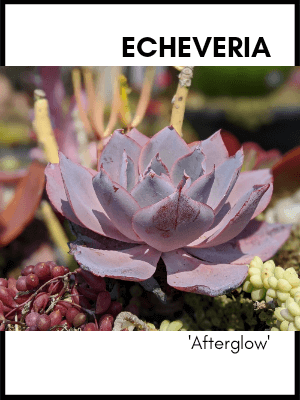
Origins
Contrary to what some folks believe, ‘Afterglow’ wasn’t found growing wild in Mexico. It was actually created here in California through hybridization. Don Worth combined Echeveria cante and shaviana to create this showstopping succulent with its wide, powdery purple leaves that have a glowing pink edge. You’ll know it when you see it!
Unique Adaptations and Special Features
What sets Echeveria ‘Afterglow’ apart from other succulents is its remarkable ability to change colors. Under direct sunlight, its rosettes display a mesmerizing combination of pink, purple, and blue hues. This unique adaptation allows the plant to thrive in arid environments by protecting it from excessive sunlight and reducing water loss.
Appearance and Growth
Echeveria ‘Afterglow’ forms rosettes of fleshy, spoon-shaped leaves that grow in a tight, compact manner. The leaves have a powdery coating, known as farina, which adds to their charm. The plant typically reaches a height of 6 to 8 inches (15 to 20 cm) and spreads up to 12 inches (30 cm) in diameter.
Flowering and Bloom Triggers
During late spring to early summer, Echeveria ‘Afterglow’ produces stunning coral-colored flowers on tall, slender stalks. The bloom is triggered by longer daylight hours and the onset of warmer temperatures. The vibrant flowers attract pollinators, adding a touch of beauty to your garden or indoor space.
What to do With Echeveria ‘Afterglow’ Flowers
The striking deep orange-red flowers may emerge individually from where the leaves join the stem, or form a clustered terminal bloom at the top. While the blooms are beautiful, it’s best to prune off any flowering stalks once they’ve finished. This helps the plant focus its energy on developing lush new foliage rather than seed production.
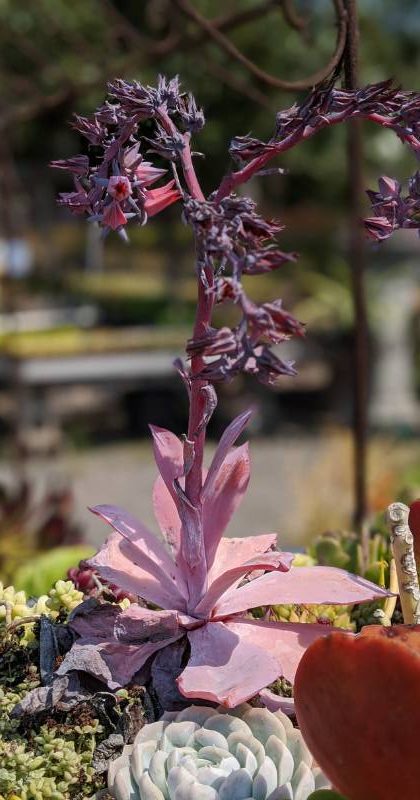
Growth Rate and Season
Echeveria ‘Afterglow’ has a moderate growth rate, allowing it to establish readily under optimal conditions. It experiences its most active growth during the spring and summer months when temperatures are warmer and daylight hours are longer.
Light Requirements and Cold Hardiness
To ensure the best growth and coloration, Echeveria ‘Afterglow’ requires bright sunlight for at least six hours a day. It can tolerate partial shade, but too much shade may result in leggy growth and less vibrant colors. For deepest leaf coloring, situate the plant in full sun, however it will still thrive with partial shade if sunlight is limited.
In terms of cold hardiness, this succulent can withstand temperatures down to 20°F (-6°C), making it suitable for outdoor cultivation in mild to moderate climates.
Watering and Care
Like most succulents, Echeveria ‘Afterglow’ has low water requirements. It is crucial to allow the soil to dry out completely between waterings to prevent the risk of root rot. When watering, ensure that water reaches the root zone without splashing on the leaves to avoid rot or discoloration. During the cooler months, reduce watering frequency to accommodate the plant’s natural dormancy period.
Minimum Temperature and Rain Tolerance
Echeveria ‘Afterglow’ can tolerate temperatures as low as 20°F (-6°C). However, it is advisable to provide protection or move the plant indoors during periods of frost or extreme cold. While it can withstand occasional rainfall, it is important to ensure proper drainage to prevent waterlogged soil, which can lead to root rot.
Fertilization
Echeveria ‘Afterglow’ benefits from occasional fertilization during the growing season. Use a balanced, water-soluble fertilizer diluted to half strength. Apply the fertilizer once a month, following the manufacturer’s instructions. Avoid fertilizing during the winter months when the plant is dormant.

Succulent fertilizer available to purchase on Etsy.
Propagation and Pruning
Propagating Echeveria ‘Afterglow’ is relatively straightforward. It can be propagated through stem cuttings or by separating offsets, also known as “pups,” that grow from the base of the mother plant. Allow the cuttings or pups to callus over for a couple of days before planting them in well-draining soil. Pruning is not necessary for this succulent, but removing any dead or damaged leaves will help maintain its aesthetic appeal.
When you’re rooting or transplanting your succulents and cacti, use SUPERthrive to help reduce the chance of transplant shock and grow a strong root system.
Common Problems and Pests
Echeveria ‘Afterglow’ is generally a hardy plant, but it can be susceptible to common succulent pests such as mealybugs and aphids. Regularly inspect your plant for signs of infestation, such as cottony white masses or small insects, and treat them promptly using organic pest control methods or insecticidal soap. Overwatering or poor air circulation can lead to fungal diseases, so it is important to maintain good watering practices and provide adequate airflow around the plant.
Indoor Cultivation and Toxicity
Echeveria ‘Afterglow’ can be successfully grown indoors, provided it receives sufficient sunlight and well-draining soil. Place it near a sunny window or provide supplemental grow lights to ensure it receives the necessary light. Remember to rotate the plant occasionally to promote even growth.
It is important to note that Echeveria ‘Afterglow’ is not toxic to cats, dogs, or humans. However, it is always a good practice to keep any plant out of reach of curious pets or children to prevent accidental ingestion.
Dormancy Period
Echeveria ‘Afterglow’ experiences a natural dormancy period during the winter months along with the other Echeveria species in my garden. During this time, the plant’s growth slows down, and it may appear less vibrant. It is normal for the lower leaves to wither or dry up, as the plant conserves energy during this resting phase. Reduce watering frequency during dormancy and resume regular care in spring when the plant begins to show signs of new growth.
Echeveria ‘Afterglow’ is a striking succulent that adds a touch of beauty to any garden or indoor space. With its unique adaptations, vibrant colors, and moderate care requirements, it is an excellent choice for succulent enthusiasts of all levels. By providing the right amount of light, water, and occasional fertilization, you can enjoy the beauty of Echeveria ‘Afterglow’ for years to come.

